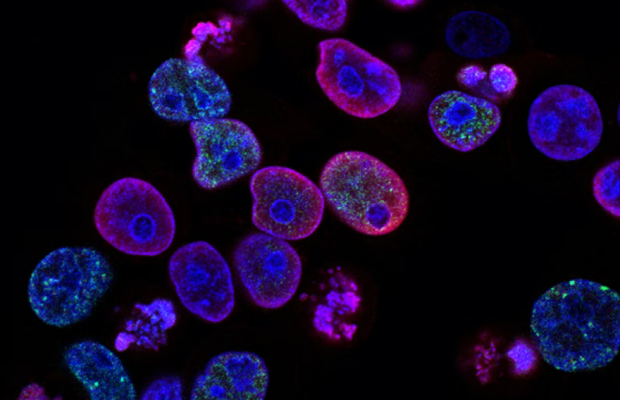Bowen Theory was developed in a clinical environment, a primary goal being effective treatment of schizophrenia. It developed into a theory of human behavior over the decades, the important periods being the Menninger years of the “regression experiment” and a beginning understanding of the emotional system and differentiation and seeing man as part of nature; the five-year NIMH period when Bowen shifted his understanding from a mother-child symbiosis to the family relationship system and began to develop the basis for his first six concepts; the 1960-67 period when he gained understanding of triangles, unified the concepts into a theory and realized the importance of extended family work as the most fruitful area for promoting differentiation; the early ‘70’s (1973) when he began to include societal emotional process in the theory; and the move in the late ‘70’s to a more clearly stated “natural systems” view, with emphasis on evolutionary theory and science. Looking back, one has to be impressed with Bowen’s effort to continually expand and develop his theory. As he said, “. . . it [the odyssey] has been a most interesting life trip.” (Kerr-Bowen, p.385) Bowen was always moving ahead while we in the network were more static.
It’s not surprising, given the move from a treatment for schizophrenia to a theory including societal emotional process relating to all areas of human functioning, based on seeing man as a part of nature and evolution, that members of the Bowen network would be scattered along the historical points in terms of their own theory development. Some, perhaps most—and this is more my opinion based on personal observation—base their understanding on the NIMH years through 1967 and de-emphasize (perhaps even dismiss) the biological basis of the theory, i.e., the emotional system and differentiation. (I noted in a previous presentation Bowen’s observation that many in the network exclude differentiation.) (Boyd, Clarence, ed. p. 89) Others pay little attention to societal emotional process. (I began to attend the yearly symposia in the early ‘70’s and observed the drop-off in attendance after the inclusion of societal emotional process.) And the move to natural systems, which was always present, but not so clearly articulated, and science, I think, also left behind a percentage in the network.
It’s also not surprising that since the theory began with a clinical goal and the great majority in the Bowen network are clinicians that they would emphasize the family therapy part of the theory. The title of Bowen’s 1978 book is Family Therapy in Clinical Practice, with the first sentence of the first page (“Commentary” by James Framo) being, “The world of family therapy has long awaited Murray Bowen’s book.” I think one can see the 1960’s as the family therapy years: “During the five years to 1965 the six interlocking concepts of family systems theory were developed in detail. Then came the problem of conceptualizing the concepts as parts of a unified theory and presenting it in writing” (Bowen, p. xv) and “I began using the term family systems theory in 1966” (Bowen. p. xvii) These were the years (or soon after) when many in the network became familiar with the theory. I can recall the impact of my own first reading of the theory: it was the relationship system processes that grabbed me—the triangles, shifting symptoms and types of symptoms, birth order impact on functioning; the nuclear family emotional system stuff. It was not the concepts involving multigenerational transmission and differentiation, or that these processes were driven by the emotional system.
Bowen came to NIMH with “. . .preliminary ideas about the emotional system and differentiation of self [which] were used to make predictions about the course of illness in the family.” (Kerr-Bowen, p. 361) and, “The basic theory was guided by knowledge from the emotional system and the differentiation of self. This formula has continued through the years.” (Kerr-Bowen, p 376) and, “This is a theory about the functioning of the emotional system in man.” (Bowen, p 423) I emphasize this because I think this is the biological foundation that keeps the theory embedded in evolution and connects the human to all living things. Without differentiation and the emotional system, it’s easier to slip into psychoanalytic thinking (but without the Freudian terminology) and assume a blaming posture. For example, I’ve always seen “communication theory”, with its insightful understanding of human interaction that makes visible emotional exploitation in relationships, as lacking this base in the emotional system and differentiation. Yet, I think some in the Bowen network don’t see a great difference between communication theory and Bowen Theory. (Jackson, 2008) This insight, without an evolutionary base, can promote blaming. Dr. Bowen once asked someone—he probably had that smile on his face—who was dealing with a challenging extended family: “Do you see your mother as a product of evolution?”
Take individuality and togetherness, which are manifestations of cortical and subcortical processes. Without differentiation and the emotional system these are seen in terms of a balancing process, with the goal of achieving the right balance between individuality and togetherness. Is the right balance the same for someone around a level 40 as one at level 50 or level 60 (on the scale of differentiation)? At the different levels of basic functioning their manifestations would be strikingly different. The effort should be on trying to improve differentiation; the individuality/togetherness forces will always be present (as will their balance) and how they’re expressed will change with the level of functioning.
Terms like individuality and togetherness, fusion, emotional center, intellectual center are all valid descriptive terms. I think Bowen was clear about their use: “It is reasonably accurate to compare the functioning of the emotional and intellectual systems to the structure and function of the brain.” (Bowen, p.372) However, it is important to remember that these descriptive terms originated decades before the advances in neuroscience and genetics that, I think, support them. They may accurately describe manifestations of organic processes, but not the organic processes themselves. For example: “In poorly functional people, the two [emotional and intellectual] centers are intimately fused, with the emotional center having almost total dominance over the intellectual center. In better functioning people there is more separateness between the centers. The more separateness, the more the intellectual center is able to block, or screen out a spectrum of stimuli from the emotional center, and to function autonomously.” (Bowen, p. 372) I would hypothesize that in terms of organic structure the more connected there are—i.e., the more neuronal connections there are between the cortical and subcortical areas–the more the cortical can guide the emotional system. This is a quibble, but a small matter like this might be an obstacle to someone already resistant to seeing the emotional system as the biological force driving emotional process.
There is still much to do in terms of expanding and developing Bowen Theory, most of all, I think, in the particularly complex area of societal emotional process. (I think members of the Bowen network are all over the map in terms of how they understand societal emotional process.) As a theory of human behavior, if, as I believe, it’s a valid theory, it will relate to all areas of human functioning. The clinical part will just be a side. The theory has much to offer as a way to elevate functional behavior in all systems, aside from the more dedicated, long-term efforts of some families to improve basic functioning.
However, the theory may also wither. History is full of examples where thinking bloomed for relatively brief periods, only to go dormant for centuries. Bowen said that “. . . most of the people who have learned the theory and are practicing it, still rely on my formulation of the theory as their source of knowledge. If this should continue into the future, then this theory will also have become another closed belief system.” (Bowen, p. 407)
Finally, I’ve always thought that, in general, the Bowen network did not appreciate the magnitude of a societal shift to Bowen Theory—a shift that is a move away from the view of human special-ness and all that involves, including a belief system shift. Human history (as well as my own personal experience) indicates strong resistance to this. Greater understanding of human behavior—an expansion of human consciousness– has a huge upside, but there is the pain, a sense of loss, involved in giving up our view of the human as special. I think it’ll take a lot of misery to motivate us to make the shift.
References
Bowen, Murray, Family Therapy in Clinical Practice, 1978.
Boyd, Clarence, ed., Commitment to Principle: The Letters of Murray Bowen, M.D., 2008.
Jackson, Don D., M.D., The Sick, the Sad, the Savage, and the Insane”, M.D., Family Systems, 2008.
Kerr, Bowen, Family Evaluation, 1988, W.W. Norton & Company, Inc.




